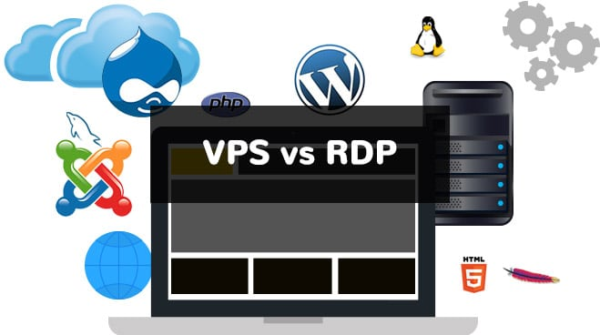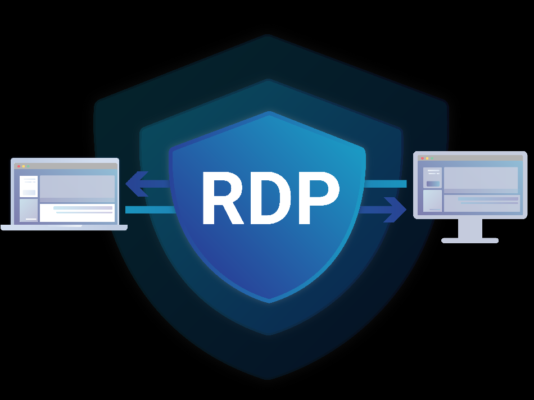With remote access becoming an integral part of many people’s work and personal online affairs, debate about the different variations of it has also gained rather more mainstream traction. Whereas previous discussions on whether or not you should use RDP or VPS were more or less confined to technical echelons of the online world, since the Covid outbreak, many jobs have become remote. So now using a different protocol is not just a technical niche discussed by coders, but a real subject of discussion both for different businesses as well as for people and their personal projects.
Still, there are many other people that have just learned what remote access is all about and it is way too easy to become confused by the different methods, technicalities, and protocols. Not only RDP and VPS are important components of many different online jobs now, but it is also plausible that they will be even more important and borderline necessary tools of online work in the near future. So in this article, I will explain both RDP and VPS, and then I will cover their differences and finally conclude which one you should use as part of your own personal use case or work.

1- What is RDP?
Let’s cover RDP first and then VPS. RDP is an acronym that stands for remote desktop protocol. It is a remote access protocol originally developed by Microsoft back in the 1990s and it is commonly known as one of the most utilized and popular remote access solutions. RDP uses advanced encryption both on your connection and on the connection key, making it highly secure and reliable. RDP also supports GUI as part of the connection which makes it the ideal connection method for people who are looking for graphically demanding tasks as part of their remote access connection, a prime example being forex trading. RDP’s popularity and common usage have led to many other versions of it being developed by third-party developers as part of open-source projects, XRDP, being the most famous case. The default transmission port for an RDP connection is TCP port 22.
RDP servers are an optimal workplace server structure since the admin of the server can add more users and rank them based on access level. This makes it highly configurable in projects. Looking to do the same for your workplace? Don’t miss out on Cloudzy’s cheap offer and buy RDP admin that allows you to do the same for your own business!

2- What Is a VPS?
The term VPS stands for Virtual Private Server. The VPS itself is a derivation of the VM or virtual machine technology. A VPS uses a VM’s resources and allocates them to users via a partition plan revised by the provider. Another way to look at a VPS in simpler terms is as a separate computer or server that is remotely accessible via a remote access protocol. So in essence, VPS is just another computer that can do everything that you may want from it.
There are also different protocols that you can use to connect to a VPS server. If your VPS runs Windows as its OS, chances are you are going to use RDP. Here we see an overlap between VPS and RDP, which means that these two are actually more similar than different. With that said, most RDP servers are either shared or dedicated, wherase VPS servers are always dedicated with admin-level access. The majority of VPS users choose a Linux distro as their preferred OS, which does not support GUI and is lighter on the hardware. This makes using RDP as the protocol to connect to VPS somewhat limited to Windows VPS, and more of a niche.

3- Who Should Use RDP?
RDP is optimal for two sets of users. First are the users who definitely are going to need a GUI on their remote access server. This can be people who want to trade forex as well as people with graphically demanding tasks such as running Video editing apps, etc. The second category of people who are going to get a lot from using an RDP server are the aforementioned Business handlers who need a server with an admin on the top, and many other users below with different access levels to manage and direct.
If you are insisting on using Windows for both your host device and the destination server, then RDP also has a clear use case as it both supports GUI and has better compatibility with Windows overall. Another use case of an RDP shared server is for someone who simply wants a bare-bones server for cheap that is not going to perform anything other than the most basic daily tasks.
4- Who Should Use VPS?
A VPS is much more diverse than RDP. As such, it also enjoys more use cases as well. As mentioned, RDP can be used to connect to a VPS, This makes RDP a subsidiary of VPS as a whole and anything that RDP can do, a VPS can as well. A minor issue with VPS is the fact that it does not allow shared use. This excludes VPS from the wishlist of users who just want a basic server with basic hardware or basic daily tasks.Apart from this small issue, a VPS more or less has you covered with regards to everything else. You can get a Linux VPS and use the SSH protocol to easily host websites and media servers. You can also get a Windows VPS and use RDP to perform tasks that require GUI, such as trading in the forex market. VPS is the go-to option for personal tasks and it is much more private, secure and diverse.
Summary
Overall, RDP and VPS are more alike than different, and let’s not forget that you can use a VPS server as the destination for your RDP-powered connection protocol. Just be mindful of the potential traps and you should be fine with either of them!